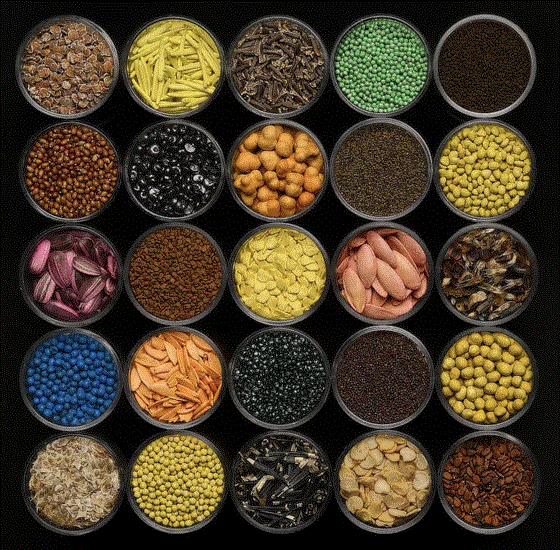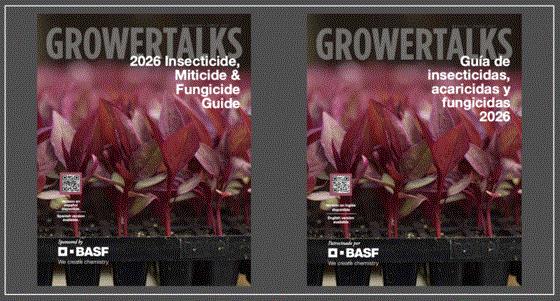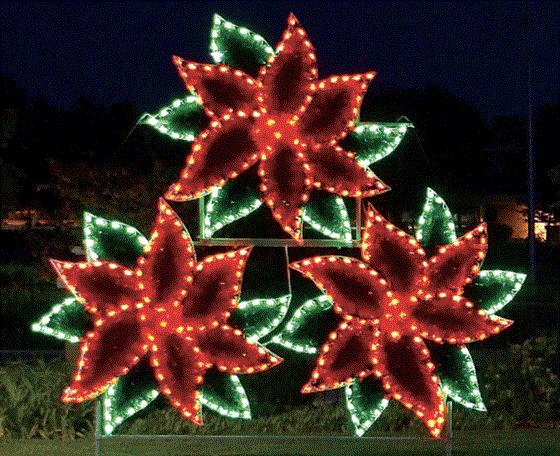PODCAST 196! The Power of Seed with Josh Kirschenbaum
Tech On Demand podcast episode 196 was a fun one because it’s always cool to talk to a friend about a topic about which we’re both super passionate.
Warning: You’re going to hear the word “seed” a lot in this one, because my guest was Josh Kirschenbaum, the seed supply manager at Ball Seed Company. Josh is a seed guy all the way. In previous roles, he was PanAmerican Seed’s business and portfolio manager for the company’s vegetable lineup. Before that, he was product development director at Territorial Seed Company in Oregon.

Here’s what you can expect from BC and JK (what we call each other …) in this episode:
Our shared fascination with the new OPEX Perfect Pick machine Ball introduced earlier this year. Josh describes it as a climate-controlled vending machine for seed packets that can pull 20 orders at a time, resulting in speedy service and increased accuracy in order fulfillment.
I challenged Josh to come up with three reasons why seed solves problems and why it’s still a preferred way to produce crops. Josh explained the economic benefits, why flexibility and efficiency are optimized when starting from seeds or plugs, and finally the amazing innovation and quality of genetics available from seed.
Throughout the conversation, we touched on many more aspects of seed crops that have been at the core of Ball's business for more than a century. Josh discussed the global nature of our industry, how innovative breeding drives our future, the importance of quality seed in large-scale plug production, and the legacy seed has in horticulture.
Listen on all the major podcast apps! Links to Spotify and Apple Podcasts are below. And make sure you subscribe so you never miss an episode. If you can, leave a positive review to help us reach more greenhouse professionals. Lastly, jump back into the archives because we have 195 more episodes covering a huge range of topics.
LISTEN ON SPOTIFY
LISTEN ON APPLE PODCASTS

Koppert Corner: The Basics of Biocontrols in Propagation
If you produce baby plants, you spend time and money controlling fungus gnats and root diseases. Fungus gnats are more diabolical when young plants actively produce new roots, when their feeding damage is the most significant. Plants with pots full of roots barely notice them chewing away, but we’ve watched these gnats consume roots from URCs at almost the same rate the plant grew them. New propagators learn this common horror story the hard way.

A well-executed nematode program is hard to beat. For most propagules, things are usually pretty wet for a week or three at the beginning. Applications made on a 5 to 7 interval will keep fungus gnat larvae thoroughly suppressed beneath your damage thresholds.
Key points to remember:
-
50 million per 1,000 sq. ft. of tray surface area is the industry standard application rate (250 million/5,000 sq. ft.).
-
Don’t dilute them too deeply into the cell or tray. Keep them in the top half inch or so of media where the pests live.
-
Steinernema feltiae (Entonem) works great in cooler soil temps but replace it with S. carpocapsae (Capsanem) once soil temps reach or exceed 85F in the summer. You also get a much broader target list with Capsanem. If shorefly is a concern, just use Capsanem exclusively, year-round.
For root pathogen prevention:
When applied correctly, it’s also tough to beat the effectiveness of Trichoderma harzianum T-22 (Trianum). This beneficial fungus colonizes and grows with roots, so apply it in as early as possible. The easy-to-mix wettable powder will tank-mix with nematode drenches. Establishing Trianum early allows it to set up shop before introducing good bacteria like the bacillus spp. organisms found in Microflora SA. They are fantastic complements, but bacillus tends to take over if it goes in together with the slower-moving fungus.
In terms of reproductive speed, think of Trianum as a tank and bacillus products like fighter jets. Let the Trianum tanks establish first, then fly in the bacillus jets with regular spray-to-drip foliar applications each week as plants come out of their wetter initial phases. You will have the best possible foundation for your next crop.
Reach out to the Koppert Technical Consultant in your area to learn more about utilizing these effective biological tools to achieve long-lasting results in fall propagation.

Nick’s Tip of the Week: Your Short-day Poinsettia Strategy
Each week, I’ll work with my buddy Nick Flax, a technical services expert at Ball, to share a concern that’s come up during one of his numerous calls with growers across North America. This week, he’s been talking to a lot of growers about strategies to bulk up poinsettias as we move into short days in many regions.
PROBLEM: I’m guessing your poinsettias for the 2025 holiday season have been planted and pinched, so now we’re on to bulking them up before we hit short days (and to keep your crop on track). However, when you plant liners in August and ship finished plants at the end of November, it’s easy to lose sight of your crop’s progress.

NICK’S TIP: I work with many poinsettia growers each year to make effective management decisions throughout their crop cycle. And one of the most common reminders I offer is that it’s critical to implement graphical tracking for optimal crop production.
To set up graphical tracking, you need three critical dates:
Pinch date. The actual date depends partly upon the size pots your crops are produced in and how many plants per pot you have. For example, larger crops like 10-in. need additional time after pinch for vegetative growth than 6 1/2-in. That said, the standard go-by for pinching is about 10 to 14 days after liners are planted or once roots hit the container sidewalls—whichever comes first.
Start of “short days.” This is when critical daylength for flower induction is achieved.
Your finish/ship date. When plants need to be at their finished height and the cyathia (little yellow flower parts) are just about open and start to shed pollen.
Note: The term “short days” is relative for poinsettias, so keep these points in mind:
The night length required to induce flowering in poinsettias varies slightly across varieties, but 11 hours and 40 minutes is considered the average minimum night length needed to trigger flowering. Inversely, this means when natural daylength is 12 hours and 20 minutes or shorter, most poinsettias will begin their flowering response.
When you reach natural short days depends on how far north or south you are. For example, this year, short days for poinsettias start on September 19 in Bellingham, Washington, and September 13 in Miami, Florida.
Once you have these three dates nailed down, create a graph. You can use grid paper or computer software like Excel, Numbers, Google Sheets—whatever you’re comfortable with. Just make sure your graph has:
-
A consistent scale along the X- and Y-axes (if it’s hand-drawn).
-
An X-axis labeled “Week #” and a hashmark for each week from pinch until finish.
-
A Y-axis labeled “Height” where the maximum measurement is the upper limit of your finished spec and a horizontal line for the lower limit of your spec. For example, if 18–22-in. height at finish is your spec, the top of the Y-axis should end at 22 and there should be a dotted line or other mark at 18 to denote the minimum acceptable height.
-
A diagonal line from “Week 0” and starting height of your poinsettias after pinch to the middle of your finished spec range at the final week on the graph.
-
Once the graph is ready, flag a few plants in your crop that you’ll measure each week. Be sure to avoid flagging plants on the corners or along the edges of a production block.
On the same day each week, measure the height of the plant from the top of the growing media to the tallest shoot/leaf, and plot the value on your graph. Connect the “dots” each week to get a better visualization of week-to-week changes in growth and development rate. Compare “where your plants are” to “where they should be,” based on the diagonal line you drew from your height in Week “0” when plants were pinched to your finished spec.
Ultimately, as you connect the plotted points on your graph, the shape of your crop growth should be sigmoidal/S-shaped. Growth in the first few weeks will be minimal, then accelerate, and slow down again as you approach your ship week.
When you use graphical tracking to grow poinsettias, you ensure that all crop management decisions are made based on the facts—not how much you feel your plants grew over the last week. If the crop slows down, you know you need to increase fertilizer, bump up the greenhouse temperature, etc. If your poinsettias start to grow too quickly, you can decide on a PGR strategy that appropriately curbs a spike in growth. It gives you peace of mind and a clear illustration of whether your crop is on track size-wise and if it will finish on time.
If you haven’t started your graphical tracking program this year, it’s not too late to get it going.
IF YOU NEED A READY-MADE GRAPHICAL TRACKING TOOL, Ball Seed has one that you can use. Click that link and scroll down to “Charts & Tables.”

HOT OFF THE PRESS! Insecticide, Miticide & Fungicide Guide
For the better part of a decade, the INSECTICIDE, MITICIDE & FUNGICIDE GUIDE from GrowerTalks has been one of the most beloved, go-to resources for our industry when it comes to battling pests with trialed and tested strategies. Just released, the 2026 guide (linked above) includes a fantastic range of articles, research findings, testimonials and the most comprehensive charts produced on an annual basis. Remember, the guide is also available IN SPANISH!

Updated tables and charts detailing greenhouse and nursery fungicides, insecticides and miticides are presented in an easy-to-follow way, organized by disease or insect and with complete mode of action (MOA) information.
The articles, written by experts from various disciplines, cover specific diseases like Fusarium and insect pests including Thrips parvispinus, as well as a profile of Tom Dodd Nurseries and research into the use of rice hulls and preemergence herbicides for weed control in container production.
Of course, throughout the guide, you’ll find countless other tips, tricks and new strategies to help your greenhouse or nursery take prevention and control to the next level.
As always, big shout out to the sponsor, BASF, for supporting this resource and offering research-based content and practical information in the guide.

Poinsettia Lighting as Days Get Darker
Nick covered graphical tracking and height management in his tech tip, but I wanted another critical piece of the poinsettia production puzzle. As he mentioned, you’re coming into the home stretch, but attention to detail remains critical. Your greenhouse environment should be top of mind while daylight decreases and temps fluctuate.
 Note: This is NOT proper poinsettia lighting.
Note: This is NOT proper poinsettia lighting.
Here’s a quick video covering FINISHED POINSETTIA LIGHTING. As days get darker and your crop keeps moving along, instead of reducing light, you now want to maximize the amount of light hitting the plants, especially if you’re growing in northern regions. Light dramatically affects bract temperature and development, critical pieces to the puzzle that ends with an optimal crop. One of the best tips is to remove any shade paint on your glazing to increase light coming in. It’s a challenge that natural light is the lowest as you are finishing your crop, but one that can be managed.
Finish Line … Pls Take the Survey!
I mentioned this a few weeks ago … but definitely want to remind you that we’d really appreciate it if you’d take a few minutes to complete the 2025 salary and benefits benchmark survey for GrowerTalks/Green Profit and AmericanHort. The deadline is September 26.
Companies like yours that take the survey can better understand salary and benefit trends and see how they compare to other survey participants. The survey includes company demographics, staffing and benefits and salary data on up to 34 different job titles across full-time, part-time and seasonal employees.

We need you to participate!
You don’t have to be an AmericanHort member to benefit—all survey respondents will get the full report prepared by Industry Insights. And you don’t have to be a certain-size operation—anyone and everyone can participate! Also, if you’ve participated in taking the survey in previous years, some data will automatically be populated for you, saving you time.
HERE’S THE LINK TO COMPLETE THE SURVEY (which is confidentially collected and maintained by Industry Insights’ professional data team and securely stored).
Thanks for your participation—talk to you next week.




Please feel free to send your comments, constructive criticism and topic ideas to me at bcalkins@ballhort.com.

Bill Calkins
Editor - Tech On Demand
This email was received by you and 25,513 other fine subscribers!
If you're interested in advertising in Tech On Demand, contact Kim Brown ASAP and she'll hook you up.